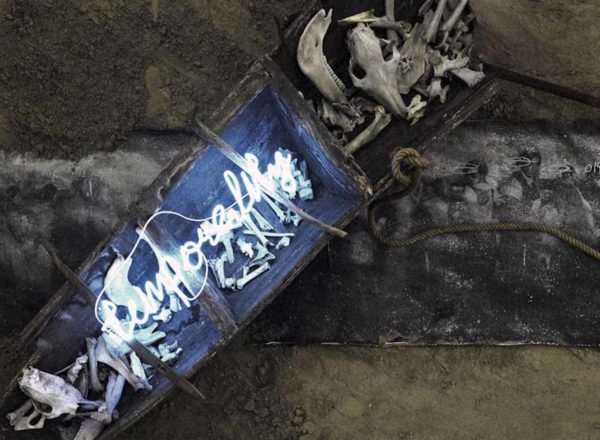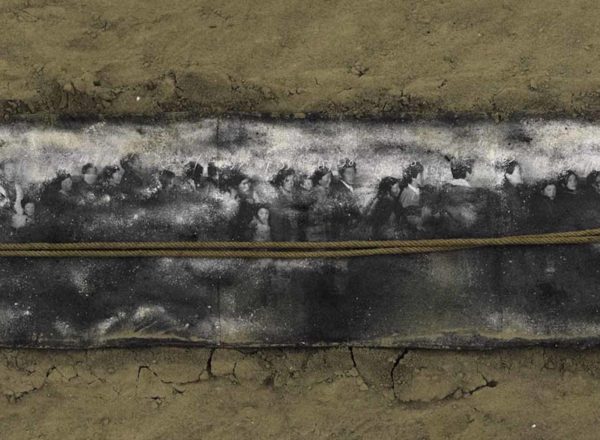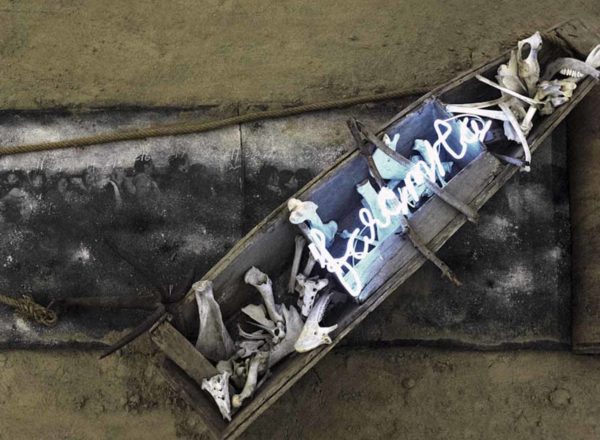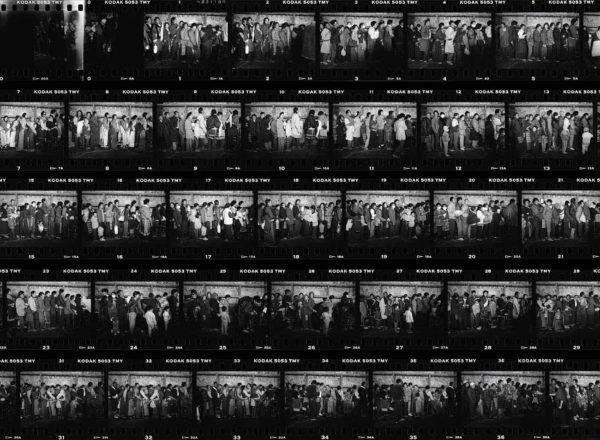Silver bromide emulsion print, black and white negative ‘Tibet, 1993’, cotton on linen, hand painted with ink and pastel. Two old boats and anchors found at antique fairs, selected animal bone fragments, hemp rope, sand and neon text.
The work entitled The Pilgrims looks deceptively like an initiatory quest or crossing. In reality the two ends of the path are identical: two boats face each other there, with their anchors chained together. For Gao Bo, although the illusion of departure exists, arrival is impossible, and only the time during which transition and wandering take place has any meaning. This is symbolised by a strip of linen connecting the two boats, printed with the vague, almost invisible forms of three hundred Tibetan pilgrims. Blackened with ink, it becomes a dark river that is hard to identify as a photograph, an unsettling Styx at the bottom of which can be seen the enigmatic corpses of a hazy afterlife.
Gao Bo sees his work as a tribute to Herman Hesse’s Siddhârta, a major initiatory narrative focusing on an exploration of the cycle of life and inspired by the founder of Buddhism. As is often the case, the work cited by Gao Bo tends to blend in with the finished work, leaving only a vague trace—like scaffolding the artist needs to develop his language, but which he removes as the construction of the work moves forward. Gao Bo denies working ex nihilo, presenting himself as a craftsman who always needs a base on which to build. The life of his works thus responds to a particular cycle: an infinite palimpsest where everything is just a point of transition towards the Other.



